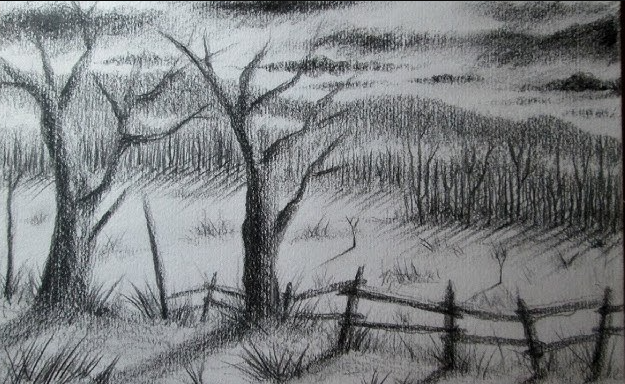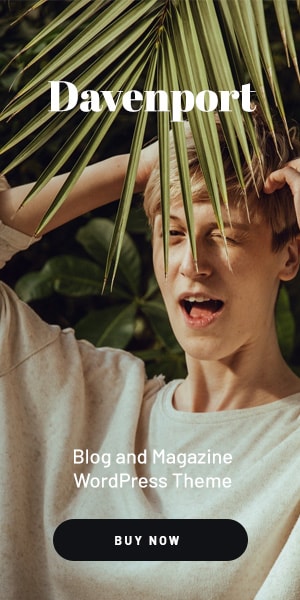Drawing—dibujar—is as old as humanity itself. From Paleolithic cave paintings in northern Spain to contemporary muralism in Mexico City, dibujos have remained a resilient cultural thread, weaving together personal expression, social commentary, and collective identity. In Spanish-speaking regions, the humble act of putting graphite or pigment on a surface is more than a pastime; it is a living archive of language, folklore, resistance, and imagination. This article explores why dibujos matter so deeply, how they evolved across Ibero-American history, and why safeguarding drawing traditions today is vital for future generations.
Table of Contents
A Shared Visual Language That Bridges Dialects
The Spanish language unites twenty countries, yet accents, idioms, and even indigenous loanwords create a linguistic mosaic that can challenge mutual understanding. Dibujos bypass spoken barriers, conveying emotion and complex ideas through universally legible form and color. Consider the graphic narratives of Argentine artist Quino, whose wordless Mafalda strips critique politics and patriarchy as effectively in Buenos Aires as in Bogotá. Likewise, a Zapotec child in Oaxaca and a Catalan teenager in Barcelona may not speak the same mother tongue. Still, both can instantly read tenderness or outrage in a line drawing of a crying mother or a caged bird. By translating thought into image, dibujos function as a pan-Hispanic Esperanto, preserving cultural nuance while fostering solidarity.
Historical Roots: From Codices to Costumbrismo
Long before European colonization, Mesoamerican scribes illuminated bark-paper codices with stylized glyphs and vibrant figurative scenes. These precursor dibujos recorded dynastic lineages, calendrical systems, and mythic cosmologies. When Spanish missionaries arrived, they co-opted indigenous drafts-people to create hybrid devotional images, layering Christian iconography onto native aesthetics. The result—seen in works like the Codex Mendoza or the Lienzo de Tlaxcala—blended Old and New World philosophies in one drawing. Centuries later, the costumbrista illustrators of the nineteenth century, such as Spain’s Francisco Lameyer or Cuba’s Víctor Patricio de Landaluze, documented everyday customs: fiestas, marketplaces, Afro-Caribbean dances. Their dibujos remain indispensable ethnographic records, capturing social class divisions and colonial hierarchies that official text rarely addressed. In short, drawings have always told the unvarnished story of the Ibero-American experience, inked in margins where ruling powers could not fully censor.
Political Resistance Inked on City Walls
In the twentieth century, pencils, pens, and aerosol became tools of protest throughout Latin America. Mexican muralists Diego Rivera, David Alfaro Siqueiros, and José Clemente Orozco converted walls into public textbooks, depicting workers’ struggles and Indigenous pride in fresco cartoons before brushing pigment. In Chile, Brigada Ramona Parra painted rapid-fire stenciled dibujos supporting Salvador Allende’s socialist agenda; during the Pinochet dictatorship, their same stencil style morphed into covert resistance iconography. Argentina’s cache movement, naming and shaming former junta collaborators, likewise relied on silhouette dibujos pasted onto sidewalks. Even in the 2020 Colombian protests, digital artists circulated handheld placards with bold black-and-white dibujos calling for educational reform and police accountability. Across decades, drawn lines have remained an accessible, low-cost weapon against oppression, especially when literacy rates or media access lag.
The Psychological and Educational Value of Dibujos
Beyond historical grandeur, drawing nurtures individual cognitive and emotional development. Neuro-education studies at Spain’s Universidad de Granada show that children who practice freehand dibujos four hours a week demonstrate significantly higher spatial reasoning and language-acquisition scores than peers who focus solely on verbal learning. The kinesthetic feedback of moving a stylus across a tablet or a pencil on paper enhances fine motor control and bilateral brain activity. Moreover, art therapy programs in post-conflict Guatemala use guided dibujos to help trauma survivors externalize memories they struggle to vocalize. The very word dibujar shares Latin roots with design—to designate or mark out—reminding us that drawing is a way of claiming mental and physical space. In Spanish-speaking classrooms from La Paz to Los Ángeles, encouraging dibujos can improve self-esteem among bilingual students who feel linguistically marginalized, allowing them to communicate through shape and shading before words come easily.

Digital Renaissance: Tablets, TikTok, and the New Mestizaje
While purists mourn the disappearance of newsprint and charcoal, the digital revolution has democratized dibujos like never before. Affordable Android tablets have penetrated even rural Andean regions via government tech-literacy programs, letting teenagers remix pre-Columbian motifs with manga aesthetics in Procreate. TikTok’s 60-second speed-draw challenges turn sketching into viral performance art, blending reggaetón soundtracks with time-lapse dibujos of Frida Kahlo or Bad Bunny caricatures. The result is a twenty-first-century mestizaje—a fusion of Indigenous, European, and global pop vocabularies—broadcast instantly to millions. Importantly, artists monetize through Patreon and Ko-fi without relying on gate-keeping galleries. Yet this boom raises archival concerns: will ephemeral Instagram Stories of protest murals be lost to server blackouts? Initiatives like Mexico’s “Archivo Dibujístico Digital” now crawl social media for high-resolution uploads, ensuring tomorrow’s historians can still access today’s pixelated graffiti.
Economic Engines: From Cartoneras to Concept Art Pipelines
Dibujos also generate livelihoods across the Hispanic world. Argentina’s editoriales cartoneras—co-ops that produce hand-illustrated, recycled cardboard books—sell at local fairs, offering income to marginalized writers and illustrators. In Spain and Colombia, animation studios staffing Netflix series such as Klaus and Encanto hire hundreds of storyboard artists whose charcoal thumbnails guide multimillion-dollar productions. The booming video-game sector in Barcelona and Mexico City likewise scouts concept artists fluent in both dibujos fundamentals and 3-D software. Even traditional artisans benefit: Oaxaca’s alebrijes carvers draft elaborate dibujos before chiseling copal wood, and their signed sketches fetch collectors’ prices abroad. These examples prove that fostering drawing literacy is not cultural charity; it is an economic strategy.
Challenges: Underfunded Schools and Cultural Stereotypes
Despite their proven value, dibujos programs often land on budgetary chopping blocks. In many Latin American public schools, art classes meet once weekly, if at all, as standardized test pressures push humanities aside. Parents sometimes reinforce the myth that drawing is a hobby, not a “real job,” steering talented youths toward accounting or engineering. There is also gender bias: boys who sketch superheroes earn praise, while girls who fill notebooks with fashion dibujos may be dismissed as frivolous. Countering these stereotypes requires policy shifts—tax incentives for art-supply donations, teacher-training workshops, and publicly funded community studios. Equally crucial is representation: when young Afro-Dominican or Mapuche students see professional illustrators who share their ethnicity speak at school assemblies, they internalize the message that dibujar can be both respectable and remunerative.
Preserving Tradition in an Era of AI-Generated Art
One looming question is how artificial intelligence image generators will affect human dibujos. On the one hand, Spanish-language prompts let novices create polished fantasy scenes in seconds, potentially sidelining early-career artists. On the other, AI can free illustrators from repetitive tasks—color fills, background variations—so they can focus on storytelling. The key lies in education: teaching ethical dataset curation and stylistic attribution will safeguard both Indigenous textile patterns and contemporary illustrator livelihoods. Several Latin American universities now offer “Digital Heritage & AI” minors where students train models exclusively on public-domain dibujos such as José Guadalupe Posada’s Calaveras. In doing so, they assert cultural agency over technological tools that might otherwise homogenize visual diversity.
Conclusion: Drawing the Future Together
From Mesoamerican codices to TikTok sketch reels, dibujos have chronicled the Spanish-speaking world’s triumphs and traumas with an immediacy unmatched by prose. They bridge dialects, resist authoritarianism, nurture cognitive growth, and fuel creative economies. As we navigate an era of digital abundance and algorithmic uncertainty, honoring the cultural power of drawing means funding arts education, archiving street murals, challenging stereotypes, and steering AI ethically. When a child in Medellín picks up a stylus and traces her grandmother’s migration story, she is not merely doodling; she is drafting history’s next chapter—one bold line at a time.
Frequently Asked Questions About Dibujos
1. What materials are best for beginners who want to practice dibujos?
Start simple: a 2B graphite pencil, a white eraser, and medium-weight sketch paper. These affordable tools let you focus on line quality and shading without battling ink permanence or digital interfaces. As confidence grows, experiment with fine liners, colored pencils, or an entry-level drawing tablet.
2. How can parents encourage bilingual children to use drawing for language development?
Invite kids to create sequential dibujos that narrate daily routines, then label panels in both Spanish and their second language. Discuss the story aloud, reinforcing vocabulary. Research shows that visual storytelling solidifies new words by linking them to concrete imagery and personal experience.
3. Are there online communities specifically for Spanish-language illustrators?
Yes. Platforms like Ilustradores LATAM (Facebook), ForoDibujos (Discord), and hashtags such as #DibujantesHispanos on X/Twitter host critique circles, job boards, and livestream tutorials conducted entirely in Spanish. Participating helps artists network regionally and showcase culturally relevant themes.
4. What career paths exist for someone skilled in dibujos besides traditional fine art?
Opportunities include comic book illustration, animation storyboarding, video-game concept art, architectural rendering, product design, tattoo artistry, and educational textbook graphics. Fluency in both hand drawing and digital software like Clip Studio Paint or Blender increases employability across sectors.
5. How do I protect my original dibujos from being copied online?
Upload watermarked, lower-resolution images for social media and register high-resolution files with a copyright office where available. Use platforms that support content-ID tracking, and consider minting unique pieces as NFTs on reputable, eco-friendly blockchains to establish provenance.

